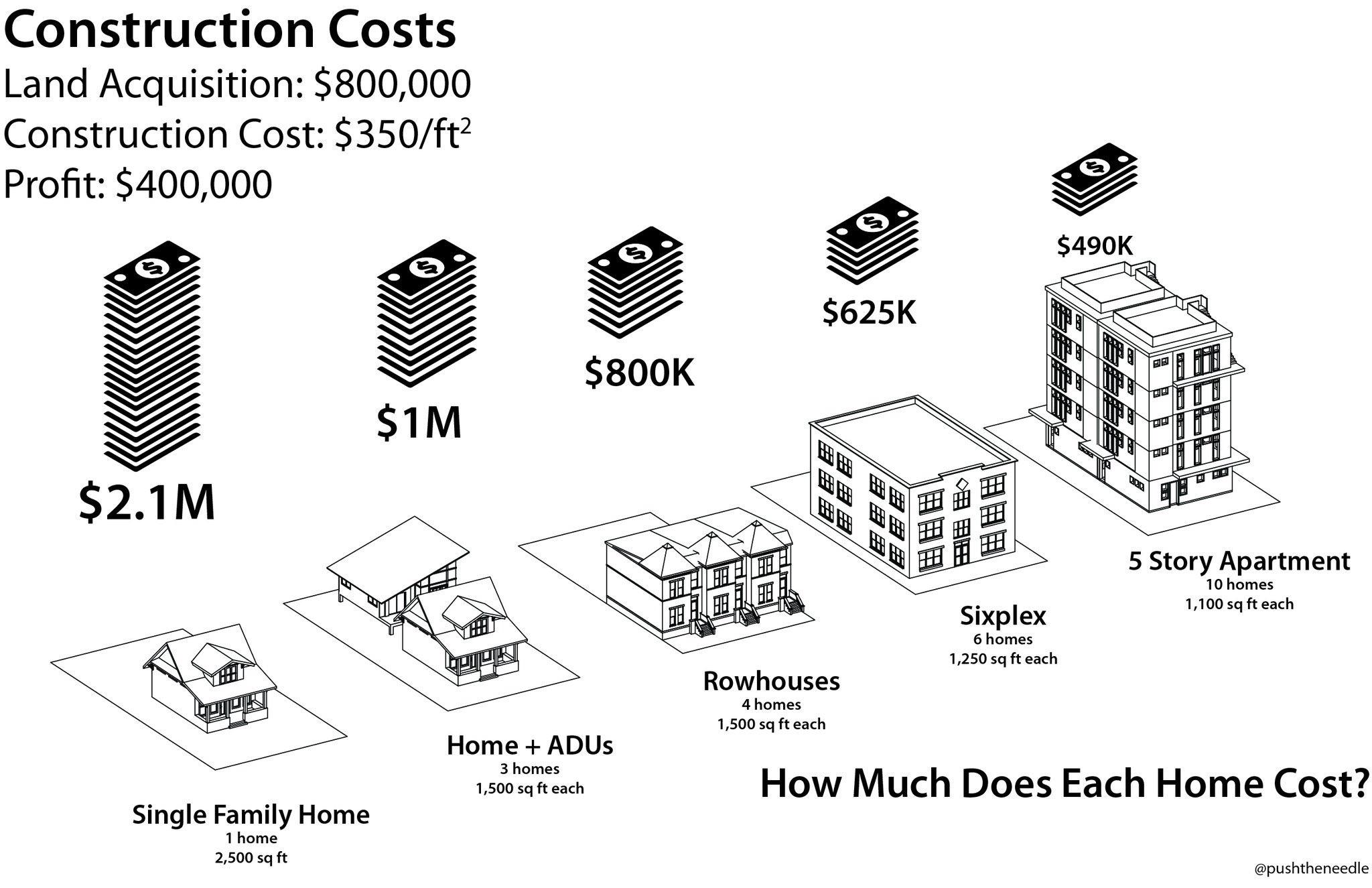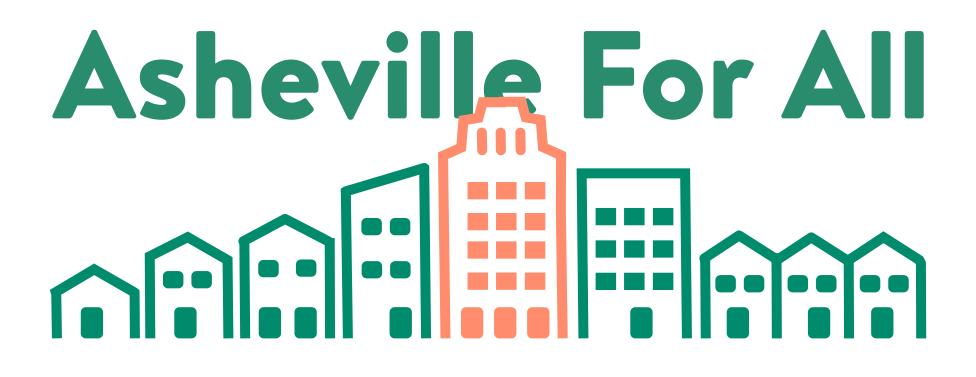What About the Dream of Owning a Home?: How More “Missing Middle” Homes Can Help Homebuyers Too
June 22, 2023
This member commentary post does not necessarily reflect the views of Asheville For All or its members.
There’s a comment that I seem to run into whenever I speak about housing with local elected officials, from city council members to state legislators. And it goes something like this:
“We need more apartments to ease the housing crisis. But I just don’t know about all these apartment buildings. We also shouldn’t give up on giving people the dream of home ownership and building equity.”
The point I want to make in this post is simple: we can have our cake and eat it too. We can have more multifamily housing—including, but not limited to the “missing middle” housing types that are the subject of a current City of Asheville initiative—and we can have more opportunities for homebuyers at the same time.
Surprise: You Can Own Apartments! (They’re Called Condos)
First, we need to disentangle the “dream” of home ownership from the “dream” of owning a detached, single-family home, because I think these two are often confused in American culture.
For example, when John Boyle wrote recently at the Asheville Watchdog about the “starter home,” he was clearly picturing a certain archetypical house, maybe a bungalow, with a small yard of its own. (In fact, in his interview with a local home builder, he made it clear that he was unfamiliar with multi-family homes as a concept, referring to a “duplex” as a “double home” instead.)
This specific dream—of not just owning a home, but a detached one—might be peculiarly American.1 Consider that in most of Europe, the percentage of families that own homes is roughly the same as that in this country—about two-thirds—but the homes that people own are much more likely to be multi-family homes.
But even in the U.S., people do buy multifamily homes—condos, townhomes, flats, whatever we want to call them—as starter homes. Incidentally, I’ve had friends in Minneapolis that purchased townhomes in affordable, walkable residential neighborhoods as starter homes. I’ve had family members in New York City and Santa Monica that began raising their children in condos. One of my nieces spent most of her childhood and teenage years living in one owner-occupied condo or another. These were great homes in great places, where a single-family house would have been too expensive.

There’s nothing wrong with a starter home being an owner-occupied apartment inside of a six-plex.
These kinds of places still have outdoor space. But instead of mirroring, a rugged-individualist land use mindset, where every nuclear family should have their own excessive, cordoned-off zones with which to spread themselves out and take up as much space as possible, these places are shared. The costs of maintaining them are shared too.
(Personally, I don’t like mowing the lawn, and I think it’s rather ridiculous that the dominant assumption in this country is that if you are going to raise a family in a stable home, that must mean that you want to maintain and nurture a lawn too!)
In Asheville, we think of condos as expensive because there aren’t enough of them. Our land use policies—and probably our local culture too—simply make them scarce. And so when they go on the market, they go quick. And since downtown is one of the few places in town were we are likely to see condos developed—and those are the ones that we tend to read about—we think of owner-occupied multifamily homes as very expensive. But that’s because land is extremely valuable downtown.
Just think about it: imagine if someone tried to build a detached single-family home downtown, somewhere where there are condos at present. Maybe South Lexington, or perhaps where the S+W building is. It would absolutely have to sell for multiple millions of dollars.
Here’s the kicker—even with the scarcity of multi-family homes in Asheville, they still go for less than the price of single-family-detached homes. (That’s including all of those century-old bungalows that are in dire need of repair too!) The common epithet that condos are “luxury” is a cliché, but the real luxury that we can’t afford is our land use policy and culture that insists that home buyers should only be able to shop for detached single-family homes.

In short, if we really want to produce more “starter homes,” and if we want homebuyers in Asheville to have more options for different kinds of starter homes, we should embrace “missing middle” style land use reforms, as well as higher-density uses such as mid-rise and high-rise condos too.2
* * *
Here and elsewhere, I’ve tried to make the case that our cultural obsession with the detached single-family home, and our policies that largely prevent anything else from being built in many parts of the city, is bad for our wallets and bad for the environment.
But I hope I don’t come across so strong as to suggest that it’s my primary intention to entirely dash the “dreams” of others. In part two of this post, I’ll make the case for why “missing middle” reforms in Asheville have to potential to make it easier for home buyers to find affordable, vacant, detached single-family homes to purchase.
In the meantime, be sure to check out Asheville For All’s “missing middle” info page if you haven’t already.
-
If it’s not specifically “American,” it’s certainly “anglophone”. ↩
-
I do want to acknowledge that there are barriers beyond density limits that restrict the availability of family friendly condos, as Rachel Cohen from Vox has described here. ↩
This member commentary post does not necessarily reflect the views of Asheville For All or its members.
